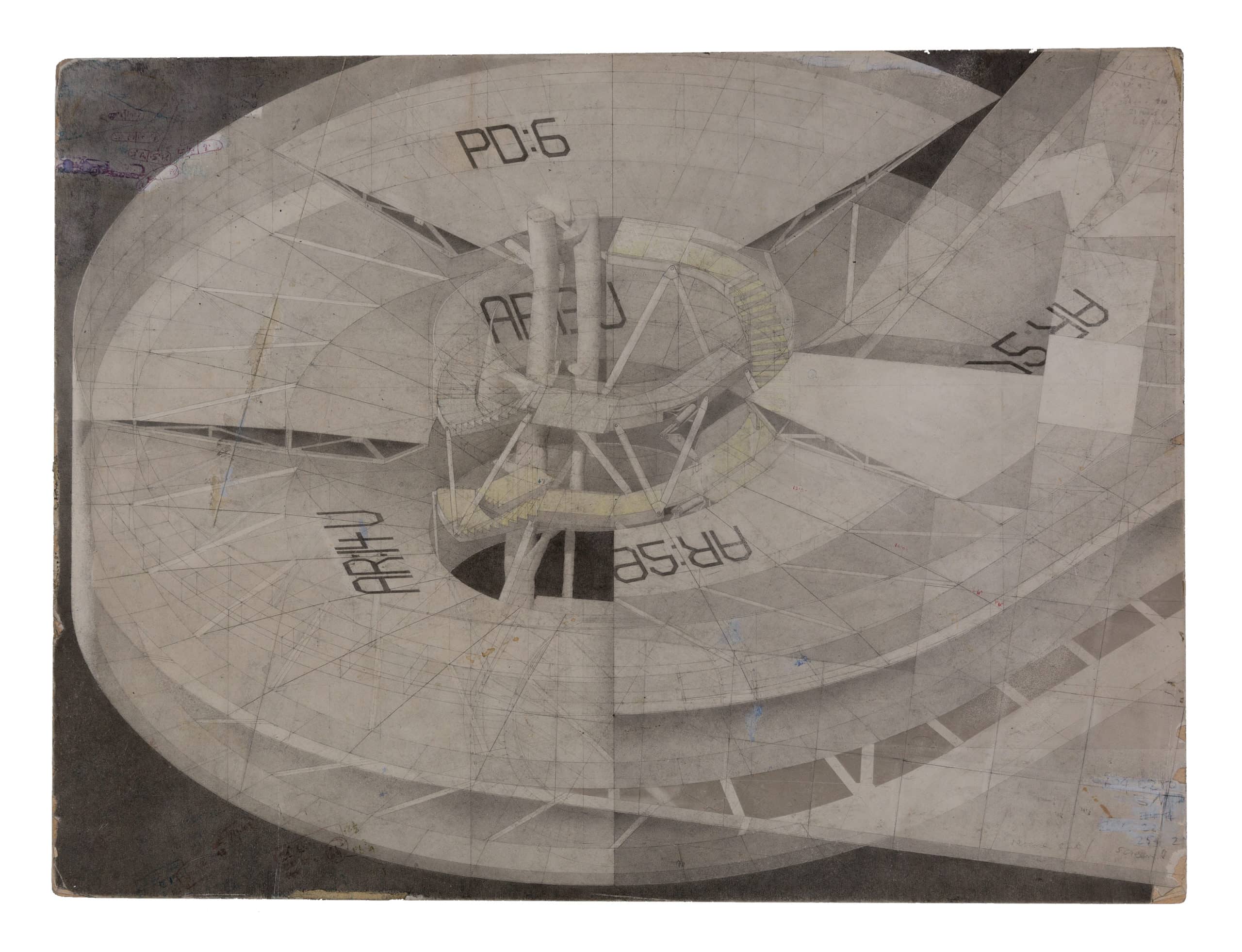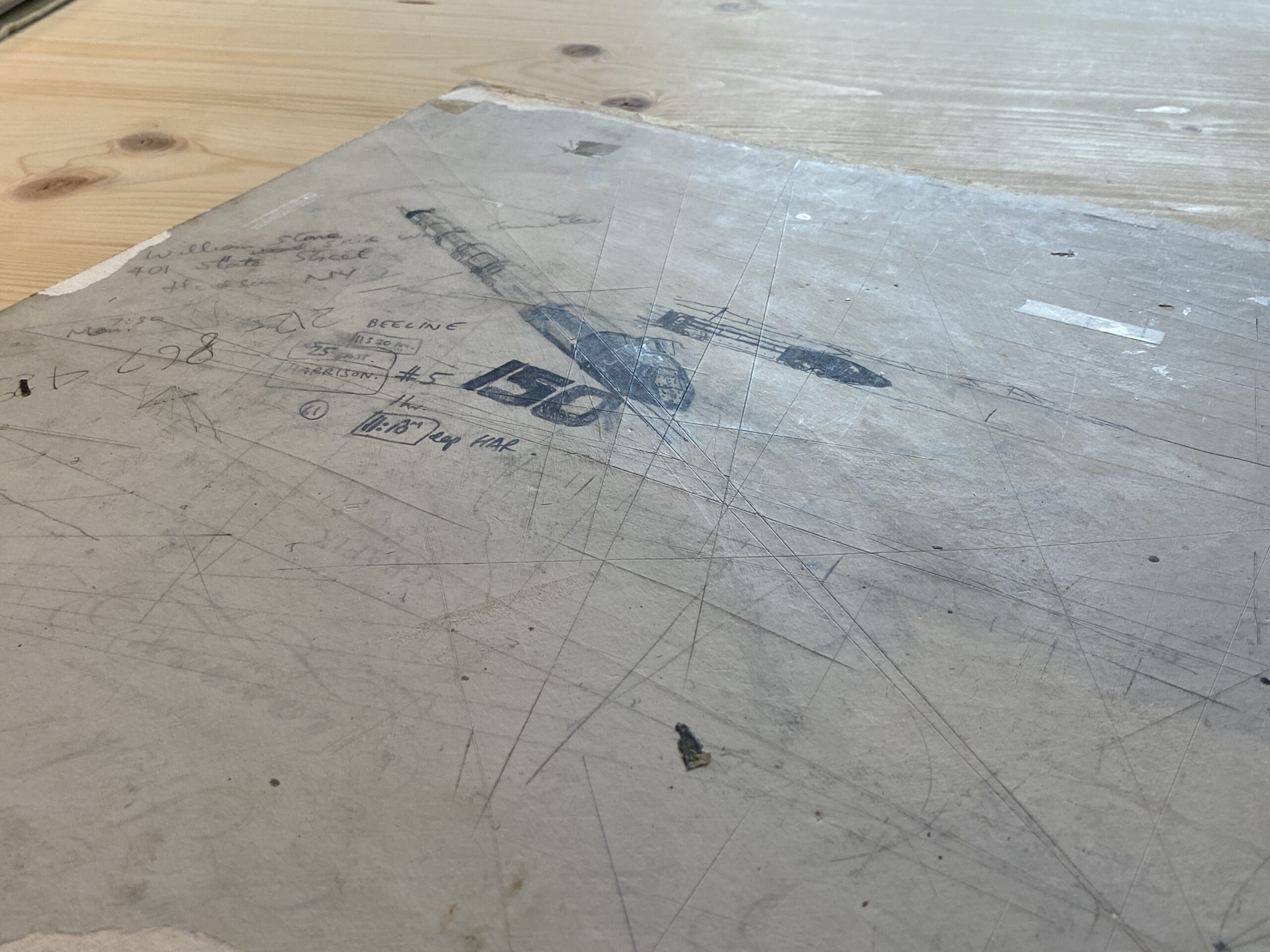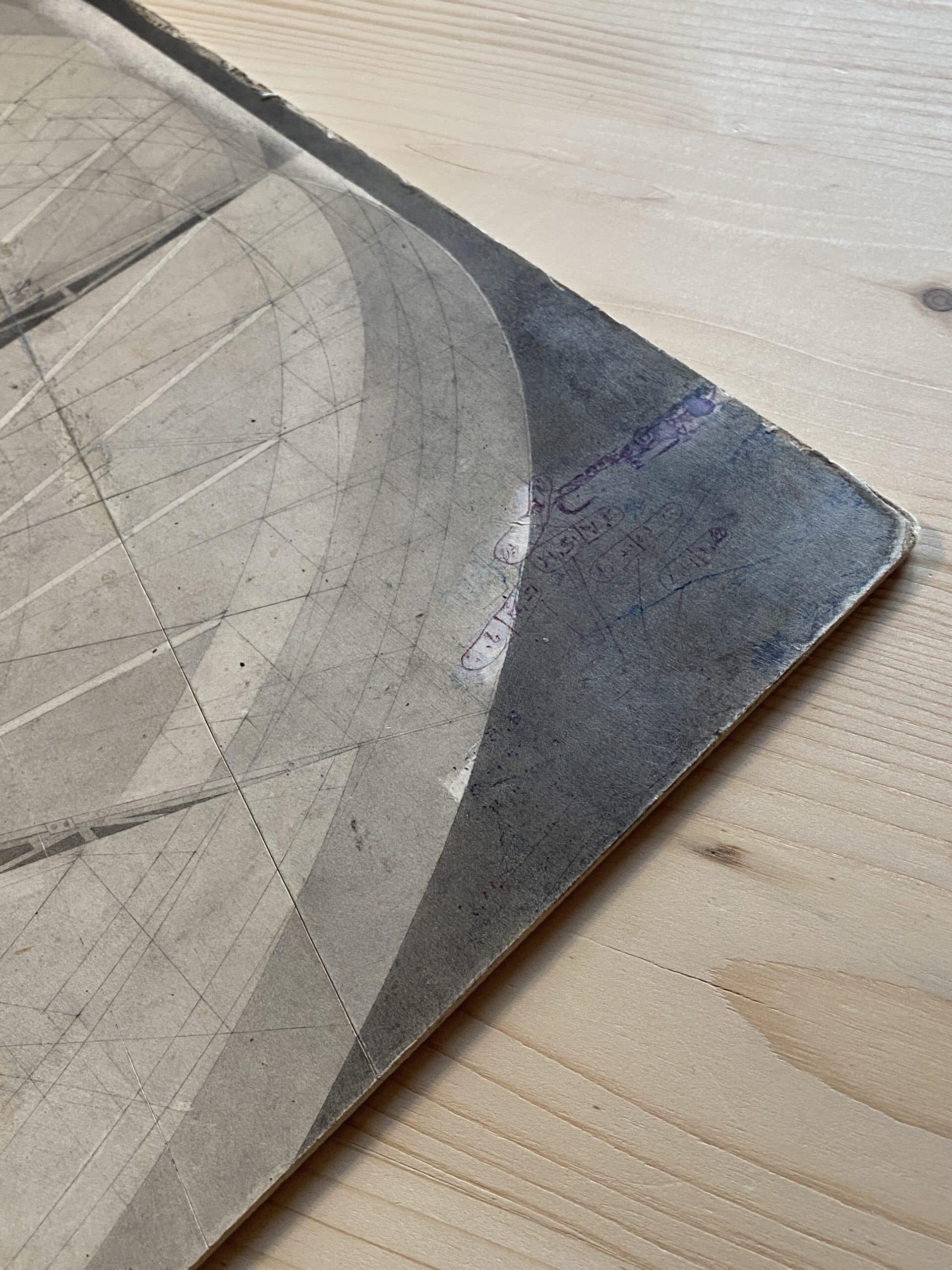Sin Centre: Sheen and Transparent Overlays
– Nat Chard and Michael Webb


Following a lively debate at Drawing Matter about the surface and support of Michael Webb’s isometric drawing of a car ramp, Nat Chard thought to ask Michael himself how he made it.
Dear all,
On Monday we had a conversation about one of Mike Webb’s Sin Centre drawings that had a print-like surface but with a nuanced tonal range that is difficult to achieve in print.
I wrote to Mike and he replied:
‘I certainly do remember the drawing, mainly because of its prior use as a cutting surface! I’d need to have the drawing in front of me to accurately describe the media used in its production; but I think that the sheen you mention may result from the use of light grey tone transparent overlays. These, in addition to graphite pencil shading, are what you see when you look at the drawing.’
This overlay of tone would explain the lack of physical marks left in the paper surface by the pencil and the sheen on the surface.
Best wishes,
Nat
Nat then asked Michael about the surface and sent him photographs. He replied,
Dear Nat
Now that you present me with the damning evidence of the actual drawing I have to admit I was wrong: it’s clearly a wall-to-wall graphite pencil shading job. As for the board used, it must be an American brand 1/8” thick, deuced difficult to cut, I remember. Not a CS 10.
If the reason for doing a drawing is to reveal how the building should not be shown, then this drawing is a great success. The viewpoint is far too high: you can’t see much at all of the interior spaces. Also the attempt to show the warped stainless steel panels forming the ramp structures where you should get strong b and w contrasts is anaemic.
All this talk has made me want to do the drawing it should have been. If I do it, it becomes yours after I snuff it. Where do I send it?
M




